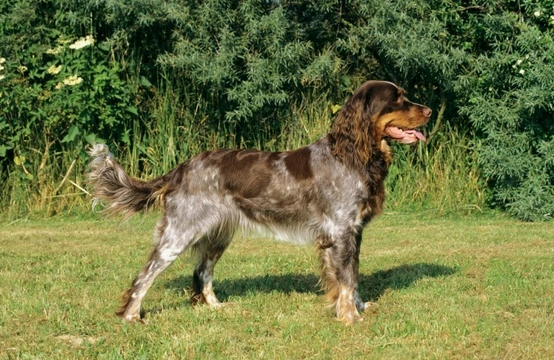
Ectropion and entropion in the Picardy spaniel dog breed
The Picardy spaniel is one of the less well-known spaniel breeds in the UK, but one that is rather more popular in their home country of France, where dogs of the breed have a long recorded history as hunting, pointing and retrieving working dogs as well as pets.
The Picardy spaniel is not currently recognised by the UK Kennel Club, although they are recognised by a number of other well-regarded breed registries across the world. However, the relatively small number of dogs of the breed in the UK means that there isn’t a great enough population of breeding stock here for a formal breed standard to be established for showing purposes at this time.
This also means that if you have decided to buy a Picardy spaniel in the UK, you might have to look around for some time before you find a litter offered for sale, and potentially, need to join a waiting list.
Before you commit to buying a dog of any breed, it is important to do your research and ensure that you know what you are getting into before you commit to a purchase. One of the most important elements of this – as well as finding out about the breed’s general temperament and activity levels – is to investigate the health of the breed in question, and whether or not they are prone to suffering from any health problems.
Dogs of the Picardy spaniel breed tend to be robust, healthy and fit for life, but they do have an elevated predisposition to suffering from a few health issues, and two of these are called entropion and ectropion respectively. These are both conditions that can affect the dog’s eyes.
In this article we will talk about entropion and ectropion in the Picardy spaniel dog breed, examining how such conditions affect dogs, why the breed has higher risk factors for them, and what these conditions mean for prospective puppy buyers. Read on to learn more.
What is ectropion and entropion?
Ectropion and entropion are two separate conditions that can affect the eyes, and the Picardy spaniel has elevated risk factors to potentially develop either condition, depending on the conformation of their eyes and face.
Both ectropion and entropion are hereditary disorders that are more prevalent within the Picardy spaniel breed due to their conformation. Ectropion is the term used to refer to lower eyelids that turn outwards and droop excessively, which can lead to soreness, inflammation, excessive tear production and tear staining. It also makes the dog’s eyes more prone to developing infections or picking up foreign bodies within the eye.
Entropion is the opposite of this – eyelids that turn or fold inwards towards the eye itself, which can cause the dog’s eyelashes to rub and irritate their eyeballs, causing problems like a discharge from the eyes, pain, corneal ulceration, excessive tear production and various other things too.
Why is the Picardy spaniel at higher risk of developing entropion or ectropion?
Both entropion and ectropion are considered to be hereditary disorders, which are passed on from parent dogs to their young. This means that if an adult dog has entropion or ectropion, their offspring also have a higher risk of developing such conditions, depending of course on the genetic input from the other dog within the mating match too.
Because pups inherit a combination of genes from both sides of their lineage, not all dogs that have a parent with either entropion or ectropion will themselves inherit it.
The conformation of the Picardy spaniel’s face, with its large, soulful eyes places the breed at higher risk of eye problems, and when you take into account the limited number of individual unrelated dogs of the breed within the UK that form the breed’s core genetic stock for future litters, it is easier to see how a conformation problem can become spread across a breed, particularly a breed that isn’t common.
How can you identify entropion or ectropion in a dog?
The problems that entropion and ectropion can cause for your dog are usually obvious to see, and your vet will be able to make a formal diagnosis after examining your dog.
Whilst entropion and ectropion are two separate conditions that are essentially the opposite of each other, many of the symptoms that they can cause are the same.
If your dog’s eyelashes appear to be pointing in towards their eyes and their eyes are sore, inflamed, damaged or otherwise not quite right, this may indicate entropion.
If the dog’s lower eyelids are very prominent and look red or sore, this may indicate ectropion.
Both conditions can cause excessive tear production, soreness, irritation, pain, infections, and damage to the cornea.
Choosing and buying a healthy Picardy spaniel puppy
Currently there is no DNA test or health screening protocol in place to predict the risk factors within any given mating match for their future pups’ chances of developing ectropion or entropion.
However, if either parent dog suffered from either condition, the chances of the Picardy spaniel puppies inheriting the same condition are much higher.
When you visit a Picardy spaniel breeder to view a litter, take a good look at the eyes of the dam and the sire too, if present. Ask the breeder if either parent dog or any of the litter’s other close relatives suffered from either condition, and what the breeder perceives the risk factors to be for their own litter.



